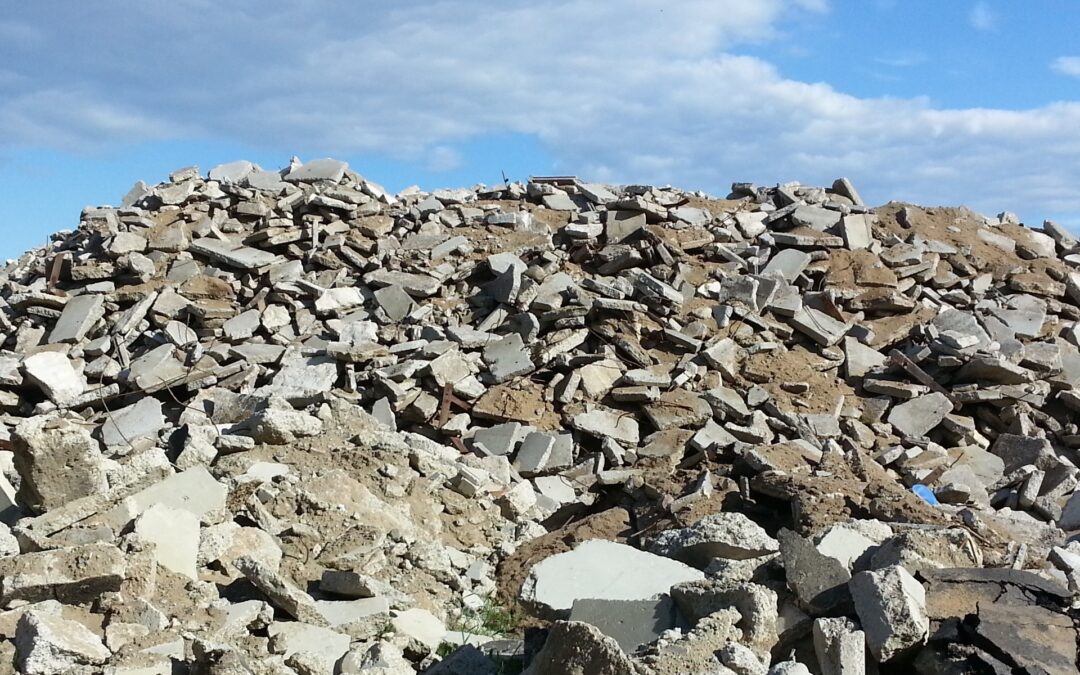Green building, LEED standards, sustainability, Midwest recycling near Omaha — these aren’t just buzzwords. For Valley Corporation, they’re vital to the way we do business. The use of recycled concrete is just one of the ways we meet our sustainability goals, and it’s a process that benefits our clients just as much as it benefits us — and the planet we all call home.
What is Concrete?
Before we get to why recycling concrete is important, let’s clear up what concrete is, exactly. To the layperson, it’s easy to conflate concrete and cement. They’re similar, but not quite the same. Cement, known in the trade as Portland cement, is simply a binding agent. Cement exists in powder form, and is combined with water to form a smooth paste. By itself, cement is easy to shape but isn’t particularly strong. For this reason, aggregate is mixed with the cement to give it something to bind to, and to provide strength.
The size and shape of the aggregate material will vary depending on the use of the concrete, but generally speaking, aggregates that are rougher work better; they give the concrete an irregular surface to adhere to, providing a stronger end product than an aggregate with a smooth surface. Sand, gravel, and crushed stone are all common aggregate materials; they can be used alone or — just as commonly — in combination, comprising up to 75% of the final product.
How Concrete is Recycled
Recycled concrete aggregates are processed in stages. The initial stage is performed Impact. Screeners are used to remove contaminants, and large electromagnets remove any metal reinforcement and attachments that have been used. Further processing by means of air sifting and water cleaning is also used, since as many impurities as possible — plaster, gypsum, and other forms of waste — should be removed to ensure quality.
Why Recycling Concrete Helps
The manufacture of concrete is very resource intensive. The water used must be of high quality — the same water that would flow from your household tap, in fact — because water with chemicals, impurities, or a high mineral content will lead to weaker concrete. The aggregate that’s typically used in new concrete must be quarried and processed, which in turn takes time and uses a fair amount of energy. Further energy is expended, in the form of fuel use, when concrete must be transported long distances.
Because Valley Corporation provides mobile aggregate recycling services, it’s more ecologically friendly than its non-recycled counterpart. We’re often able to re-use the recycled aggregate over the course of a project, reducing time and materials costs. This also limits the amount of waste from a demolition project, since the rebar can be recycled and the concrete that would otherwise have been dumped can be sequestered from the landfill and repurposed. For a general contractor that puts sustainability front and center, call us today!

